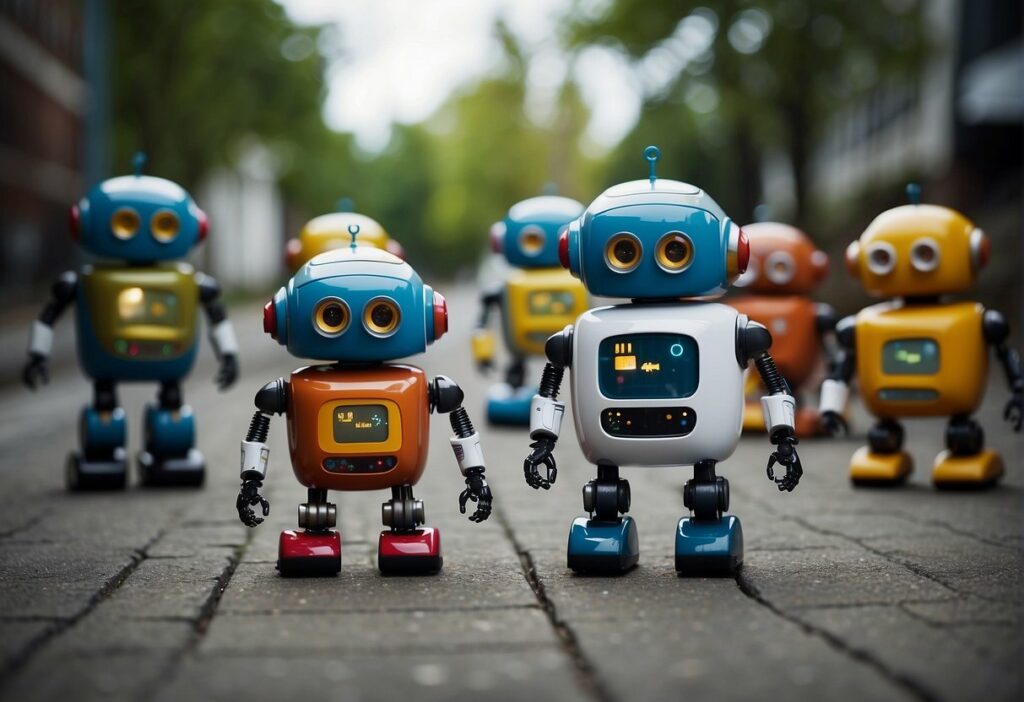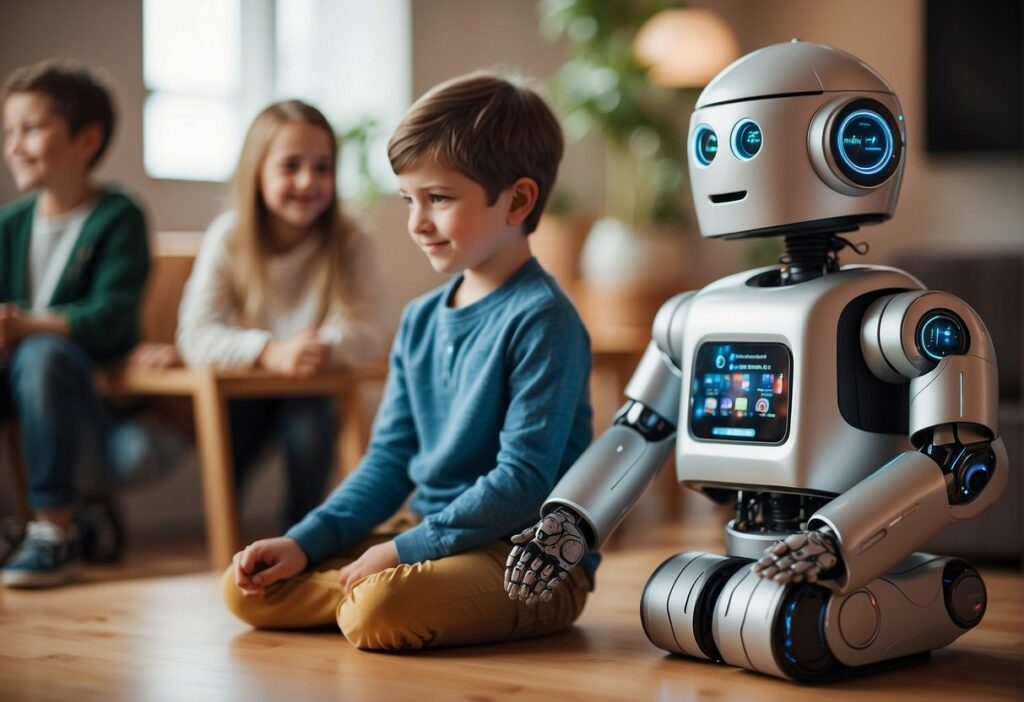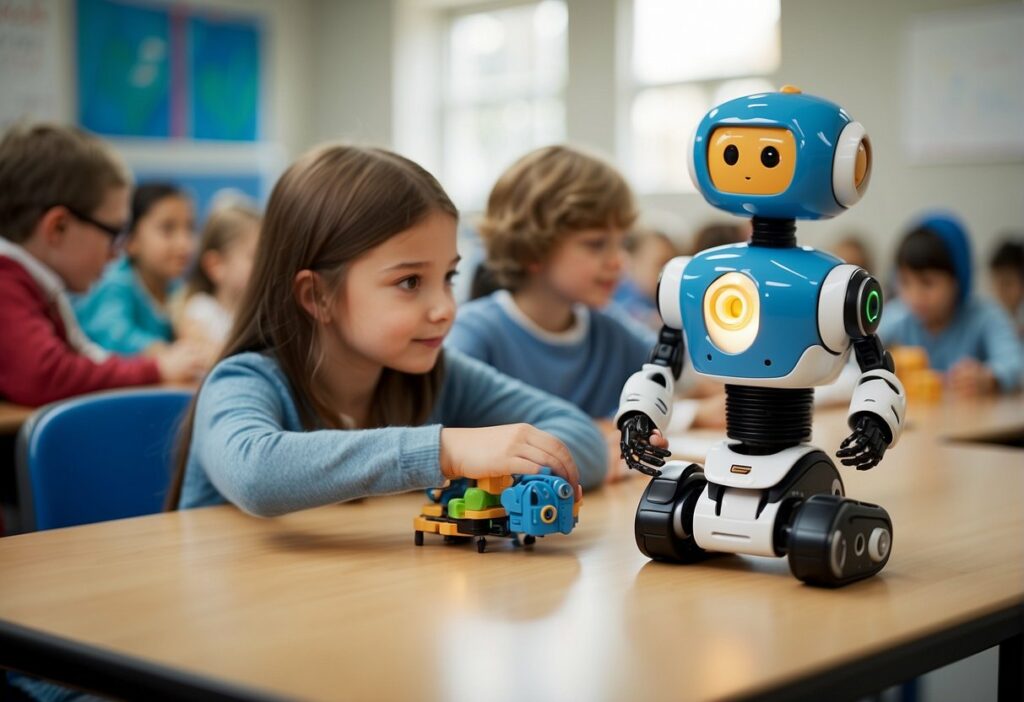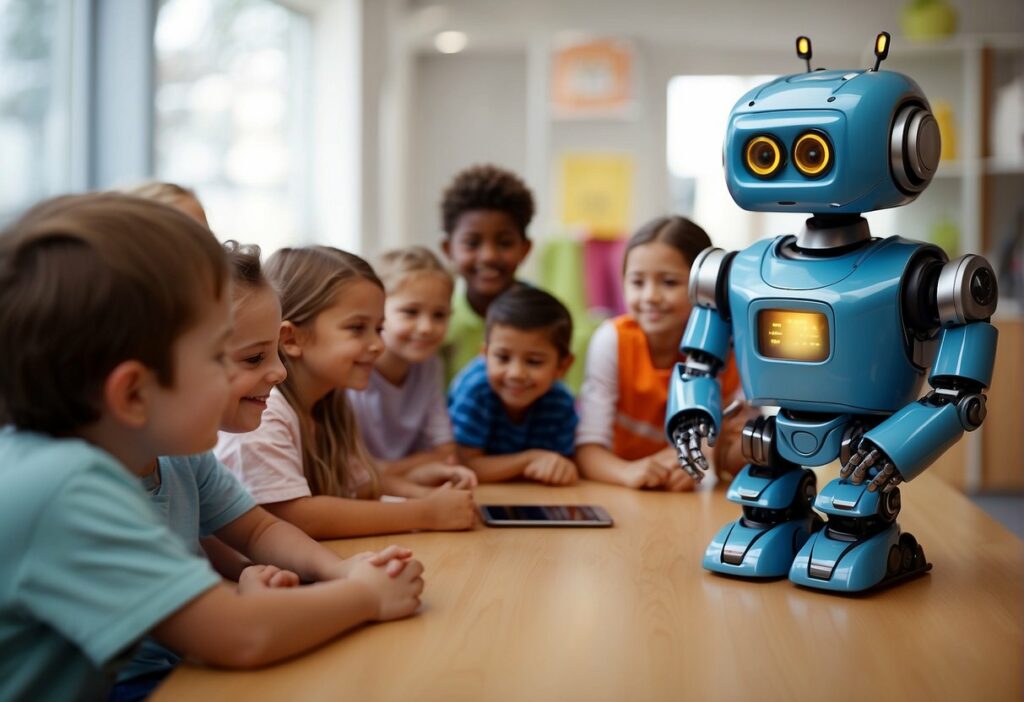The Development of Child-Friendly Robots: Innovations in Emotional Support and Learning

The intersection of robotics and child development has produced a new class of technology: child-friendly robots designed for emotional support and learning. These robots, crafted with input from psychologists, educators, and technologists, serve as tools to foster social, emotional, and cognitive skills in children.
They come equipped with features like speech recognition, facial expression interpretation, and adaptive learning algorithms, making them capable of interacting with children in a way that is engaging, responsive, and supportive.
The design of child-friendly robots takes into account the delicate balance between technology and humane interaction. Developers focus on creating robots that are not only intellectually stimulating but also emotionally nurturing. This means prioritizing safety, creating aesthetically pleasing and approachable designs, and programming robots to recognize and adapt to a child’s individual needs and emotions, thereby promoting a positive impact on the child’s development.
Evolution of Child-Friendly Robots

In analyzing the progression of child-friendly robots, it’s clear that history, technological progress, and significant milestones have shaped their development into the emotionally supportive and educational companions they are today.
Historical Context
The concept of robots as companions began in the late 20th century, with early models being simplistic and less interactive. They were primarily designed for entertainment rather than emotional support or educational purposes.
Technological Advancements
As technology evolved, robots gained advanced sensors, improved artificial intelligence (AI), and better emotion recognition software. This enabled them to interact with children on a more personal and meaningful level. Notable advancements included:
- Voice Recognition: Allowing for two-way communication between child and robot.
- Facial Recognition: Enabling personalized interactions and emotional response mimicry.
Milestones in Development
Several key developments stand out in the timeline of child-friendly robots:
- AIBO (1999): Sony’s pet-like robot that could learn and adapt its behavior.
- NAO (2006): A programmable robot used in education and research, known for its humanoid appearance and capabilities.
- Pepper (2014): A social humanoid robot designed to read emotions, known for being used in retail and hospitality, as well as in homes.
- Cozmo (2016): An interactive toy robot with a personality, used to teach kids how to code while playing.
Design Considerations for Emotional Support Robots

In the development of child-friendly robots for emotional support, designers must prioritize safety, aesthetics, and interaction capabilities to meet children’s emotional and learning needs effectively.
Safety Features
Materials: Robots intended for children should be constructed from non-toxic, durable materials that are resistant to wear and tear. Edges should be rounded to prevent injury.
Emergency Shutoff: A clearly marked emergency shutoff mechanism is imperative to allow for immediate deactivation in case of malfunction.
Aesthetic Factors
Color Scheme: Bright, appealing colors can make the robot more attractive to children, thus enhancing engagement.
Design Complexity: The robot’s design should be both simple enough to not overwhelm a child and sophisticated enough to maintain a child’s interest over time.
Interaction Capabilities
Voice Interaction: Child-friendly robots should possess voice recognition software to respond to a child’s verbal cues. It is crucial for these robots to understand and process simple language inputs.
Learning Algorithms: To adapt to the individual emotional needs of a child, the robot should incorporate learning algorithms that customize interaction patterns over time.
Child-Robot Interaction Dynamics

Child-robot interaction dynamics are crucial in ensuring that child-friendly robots effectively provide emotional support and facilitate learning. These interactions are defined by the ability of the robot to build trust, engage in social and emotional learning, and adhere to privacy and ethical standards.
Building Trust and Rapport
To foster trust and rapport between children and robots, developers often incorporate features that make robots appear friendly and approachable. Visual design, such as large eyes and soft edges, is critical. Likewise, consistent and predictable behaviors are established by programming robots to respond in certain ways to specific actions from children.
Social and Emotional Learning
Robots designed for children are equipped with capabilities to aid in social and emotional learning (SEL). These include:
- Emotion Recognition: By using sensors and algorithms, robots can identify and respond to a child’s emotional state.
- Interactive Activities: Through games and storytelling, robots can teach children about empathy, cooperation, and problem-solving.
Privacy and Ethical Concerns
Strict standards for privacy and data security are implemented in child-friendly robots to protect sensitive information. Essential considerations include:
- Consent: Acquiring explicit permission from parents or guardians before any data collection.
- Data Handling: Employing encryption and secure storage to ensure that children’s data are not compromised.
Implementation in Educational Settings

Child-friendly robots are increasingly finding their place in classrooms and learning environments, supporting emotional development and facilitating personalized learning experiences.
Curriculum Integration
Child-friendly robots in educational settings are designed to seamlessly blend with existing curricula. They serve as teaching aides that complement subjects with programmed lessons in mathematics, science, and language arts. For example, robots can demonstrate science experiments or offer interactive storytelling to enrich literacy lessons.
Teacher and Caregiver Roles
Teachers and caregivers are crucial to the successful implementation of robots in educational settings. They are responsible for supervising interactions between children and robots, ensuring that these technologies are used as effective pedagogical tools. They also manage the balance between technology and traditional instruction, customizing robot behaviors to fit class objectives and student needs.
Assessment of Learning Outcomes
To evaluate the effectiveness of child-friendly robots in learning, clear metrics for assessment are established. Learning outcomes are monitored through:
- Pre- and post-implementation tests to measure knowledge retention
- Observations of student engagement and interaction with the robot
- Feedback collection from students regarding their experience
These assessments help educators refine the use of robots in lesson delivery, ensuring that learning objectives are met.
Impact and Future Directions

Child-friendly robots have begun to show significant promise in providing emotional support and enhancing learning for children. They shape the way interactions and pedagogy evolve in child development contexts.
Case Studies and Success Stories
Numerous cases demonstrate the positive impact of child-friendly robots in different settings. The use of robots like Kebbi Air in Taiwan showcases their ability to assist in language learning and improve social interaction among children with autism. Similarly, the interaction with NAO robots has been linked to increased motivation and joy in learning among young students in various European schools.
Challenges and Limitations
Despite the successes, limitations are evident. First, the high costs of advanced robots can limit access for many institutions. Second, there is the challenge of programming robots to handle the unpredictability of human emotions effectively. Finally, privacy concerns arise as robots often collect and process personal data to function optimally.
Forecast of Technological Trends
The future will likely see robots with advanced AI becoming more intuitive and responsive to individual children’s needs. Machine learning algorithms are expected to be refined, allowing robots to personalize interactions based on a child’s learning style and emotional state. Furthermore, there is a trend towards designing robots that can adapt to cultural differences, broadening their global applicability.
